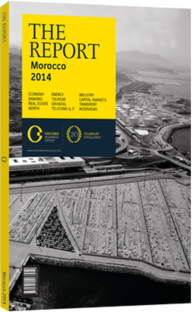Tomorrow’s metropolis: Infrastructure and urban development projects will overhaul Tangiers
The government has invested heavily in improvements to Morocco’s transport networks, port capacity and industrial infrastructure in the past two decades. Whereas public investment programmes are coming to a close in a number of areas, the Tangiers-Tétouan region is set to receive an ambitious slate of building projects between 2010 and 2017. Two key projects, the Tangiers-Metropolis programme and the reconversion of the Bay of Tangiers, will channel significant public and private investment into the regional capital in an effort to position Tangiers as an economic hub for Morocco and the southern Mediterranean.
TANGIERS METROPOLIS: In September 2013 Morocco’s King Mohammed VI launched the Tangiers-Metropolis programme, which aims to facilitate Dh7.66bn (€680.2m) in public and private investment into the region between 2013 and 2017. The comprehensive urban development programme sets ambitious goals and stands to have an impact on nearly all sectors of the regional economy. Several transport projects are planned; most notably, the construction of a ring road, the Rocade des Deux Mers, will connect the Atlantic and Mediterranean coasts and allow traffic to bypass the growing urban conglomeration of Tangiers. In addition, new access roads between the highway and the city, urban road renovation and plans to construct subterranean parking garages will all help to reduce congestion. The city’s social infrastructure is also targeted under Tangiers-Metropolis. The programme outlines plans to construct 25 new schools and 21 childcare centres, and 250 prefabricated classrooms are set to be converted into permanent structures. Four new health care clinics are planned to be built, and six to be refurbished and re-equipped. In addition, the region’s Mohammed V Hospital will be rehabilitated.
BAY OF TANGIERS: This strategy is complemented by an ongoing project to convert the port facilities in the Bay of Tangiers into a recreational and tourist space. The bay used to be the sole port in Tangiers, but all maritime shipping was transferred to the new Tanger-Med port complex in 2007, leaving room to develop the Bay of Tangiers as hub for passenger transit and recreational activities. The project contains both a maritime and an urban component, which will require an estimated Dh7bn (€621.6m) in public and private investment between 2010 and 2017. An independent firm with public capital, Société d’Aménagement pour la Reconversion de la Zone Portuaire de Tanger Ville (SAPT), was created in 2010 to manage the project.
Under the maritime dimension, port infrastructure will be upgraded and expanded to accommodate recreational boating, cruise lines, passenger ferries and fishing. This Dh2bn (€177.6m) component will be overseen by the National Ports Agency, and it will be completed with public financing and international debt. A new fishing terminal will be constructed on the western side of the bay, separating it from the recreational areas, and the former fishing terminal is being transformed into 1600-berth marina. This will make Tangiers the largest recreational marina on Morocco’s Mediterranean coast, ahead even of the Saidia beach resort to the east, which plans to construct a 1350-berth facility. Three cruise ship docking stations are due to be built in an effort to promote Tangiers as a destination for Mediterranean tourism (see analysis).
URBAN UPGRADE: The project’s urban dimension involves redeveloping the city’s waterfront to include residential, commercial and office space, a mall, cinema, 1500-seat convention centre and three hotels. This segment of the project will be managed by SAPT, and construction is expected to require investment of Dh5bn (€444m), to be completed largely by private concessionaires and public-private partnerships.
SAPT executives note that Moroccan construction firms have largely taken up the mantle in recent years, as the economic crisis in Europe has prompted many firms to avoid overextending themselves abroad. Moroccan firm Somagec is completing construction work on the new port facilities, and domestic hospitality chains have been the first to bid on the port’s hotel projects.
You have reached the limit of premium articles you can view for free.
Choose from the options below to purchase print or digital editions of our Reports. You can also purchase a website subscription giving you unlimited access to all of our Reports online for 12 months.
If you have already purchased this Report or have a website subscription, please login to continue.

